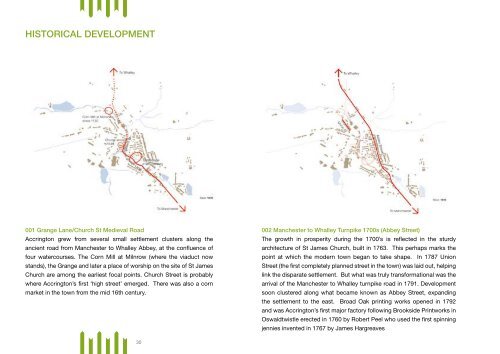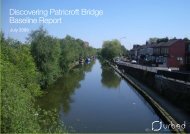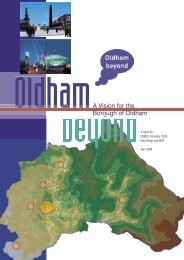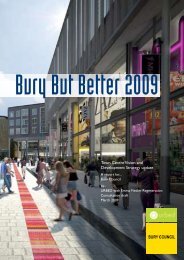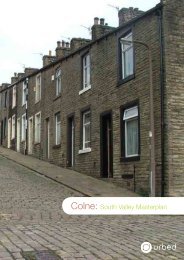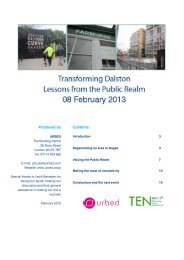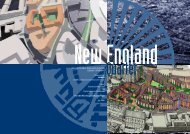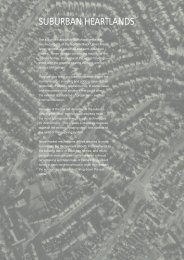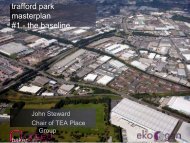Discovering Accrington - Urbed
Discovering Accrington - Urbed
Discovering Accrington - Urbed
You also want an ePaper? Increase the reach of your titles
YUMPU automatically turns print PDFs into web optimized ePapers that Google loves.
Historical Development<br />
001 Grange Lane/Church St Medieval Road<br />
<strong>Accrington</strong> grew from several small settlement clusters along the<br />
ancient road from Manchester to Whalley Abbey, at the confluence of<br />
four watercourses. The Corn Mill at Milnrow (where the viaduct now<br />
stands), the Grange and later a place of worship on the site of St James<br />
Church are among the earliest focal points. Church Street is probably<br />
where <strong>Accrington</strong>’s first ‘high street’ emerged. There was also a corn<br />
market in the town from the mid 16th century.<br />
002 Manchester to Whalley Turnpike 1700s (Abbey Street)<br />
The growth in prosperity during the 1700’s is reflected in the sturdy<br />
architecture of St James Church, built in 1763. This perhaps marks the<br />
point at which the modern town began to take shape. In 1787 Union<br />
Street (the first completely planned street in the town) was laid out, helping<br />
link the disparate settlement. But what was truly transformational was the<br />
arrival of the Manchester to Whalley turnpike road in 1791. Development<br />
soon clustered along what became known as Abbey Street, expanding<br />
the settlement to the east. Broad Oak printing works opened in 1792<br />
and was <strong>Accrington</strong>’s first major factory following Brookside Printworks in<br />
Oswaldtwistle erected in 1760 by Robert Peel who used the first spinning<br />
jennies invented in 1767 by James Hargreaves<br />
30


